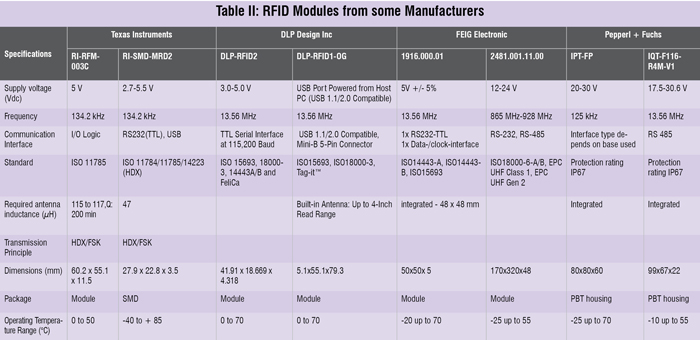Standards
RFID systems, like all other air interface systems, work in accordance with some rules. Otherwise, the wireless communication will be a complete mess, with one device interfering with another. There are some sets of physical rules that define how the electromagnetic signals will work and communicate the unique ID bits.
Below are some standards evolved for different RFID systems:
1. ISO TC 23: Animal Identification
2. ISO TC 104: Freight containers
3. ISO TC 204: Road telematics
4. ISO TC 122: Packaging
5. JTC 1/SC 17: Integrated circuit cards (credit cards with embedded tags)
6. JTC 1/SC 31: Automatic identification and data collection techniques
RFID limitations
Cost. The cost has gone down in recent years but it still needs to decrease further to meet the requirement of both low-end and high-end solutions. Prices of active or semi-passive tags limit their application to scanning of high-value goods over long ranges.

Standardisation. Standards for various groups of applications have evolved but they are a little sparse and leave much freedom in the choice of communication protocols and the format and amount of information stored in the tag. This can cause disagreement between various companies providing solutions based on RFID.
Collision. Anti-collision algorithms that can avoid signal collision while reading several tags at a time are either patented or patent pending, which adds to the cost of RFID-based system development.
Obstacle for RFID signals. Properties of some conductive materials such as goods containing water, or metal surfaces may be an obstacle to RFID application at a given frequency, as they may corrupt data transmission either by absorption or by ambient reflection of the signals.
Manufacturing not 100 per cent perfect. Manufacturing of tags is not 100 per cent failure-free even today. There is still a high percentage of defective tags in each lot.
Quick technology obsolescence. One of the major concerns of companies making RFID solutions is quick obsolescence of technology. With rapidly growing technology, more fault-tolerant readers outdate the older ones very quickly.
Security and privacy issues. Security and privacy is still a discussion for RFID technology. Proper encryption must be ensured at all interfaces where data could be intercepted or transmitted.
Possible attacks. Though there are no such attacks reported, the current RFID software can be vulnerable as reflected by various studies.
The author is a technical editor at EFY






